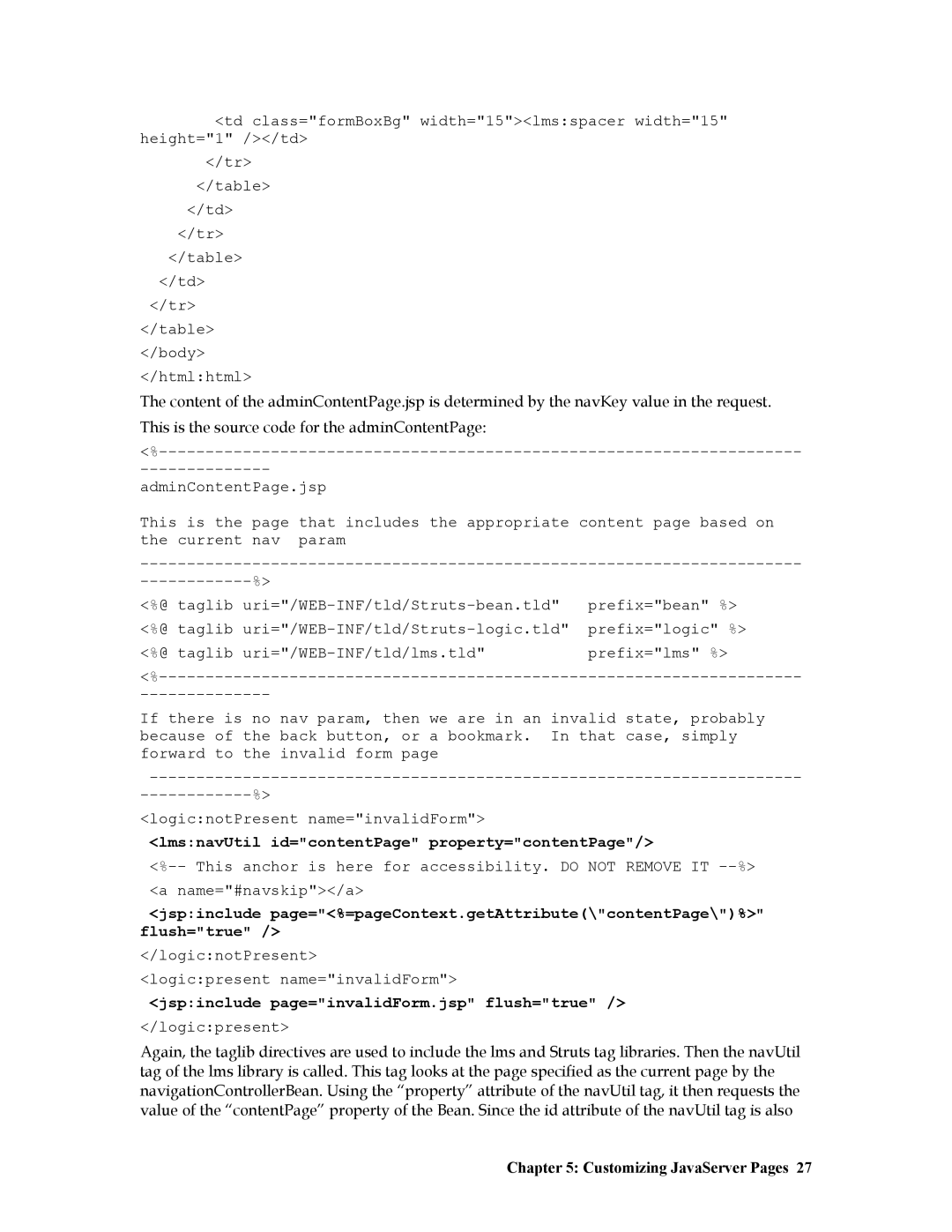<td class="formBoxBg" width="15"><lms:spacer width="15" height="1" /></td>
</tr>
</table>
</td>
</tr>
</table>
</td>
</tr>
</table>
</body>
</html:html>
The content of the adminContentPage.jsp is determined by the navKey value in the request. This is the source code for the adminContentPage:
adminContentPage.jsp
This is the page that includes the appropriate content page based on the current nav param
| |
<%@ taglib | prefix="bean" %> |
<%@ taglib | prefix="logic" %> |
<%@ taglib | prefix="lms" %> |
| |
If there is no nav param, then we are in an invalid state, probably because of the back button, or a bookmark. In that case, simply forward to the invalid form page
<logic:notPresent name="invalidForm">
<lms:navUtil id="contentPage" property="contentPage"/>
<jsp:include page="<%=pageContext.getAttribute(\"contentPage\")%>" flush="true" />
</logic:notPresent> <logic:present name="invalidForm">
<jsp:include page="invalidForm.jsp" flush="true" />
</logic:present>
Again, the taglib directives are used to include the lms and Struts tag libraries. Then the navUtil tag of the lms library is called. This tag looks at the page specified as the current page by the navigationControllerBean. Using the “property” attribute of the navUtil tag, it then requests the value of the “contentPage” property of the Bean. Since the id attribute of the navUtil tag is also
